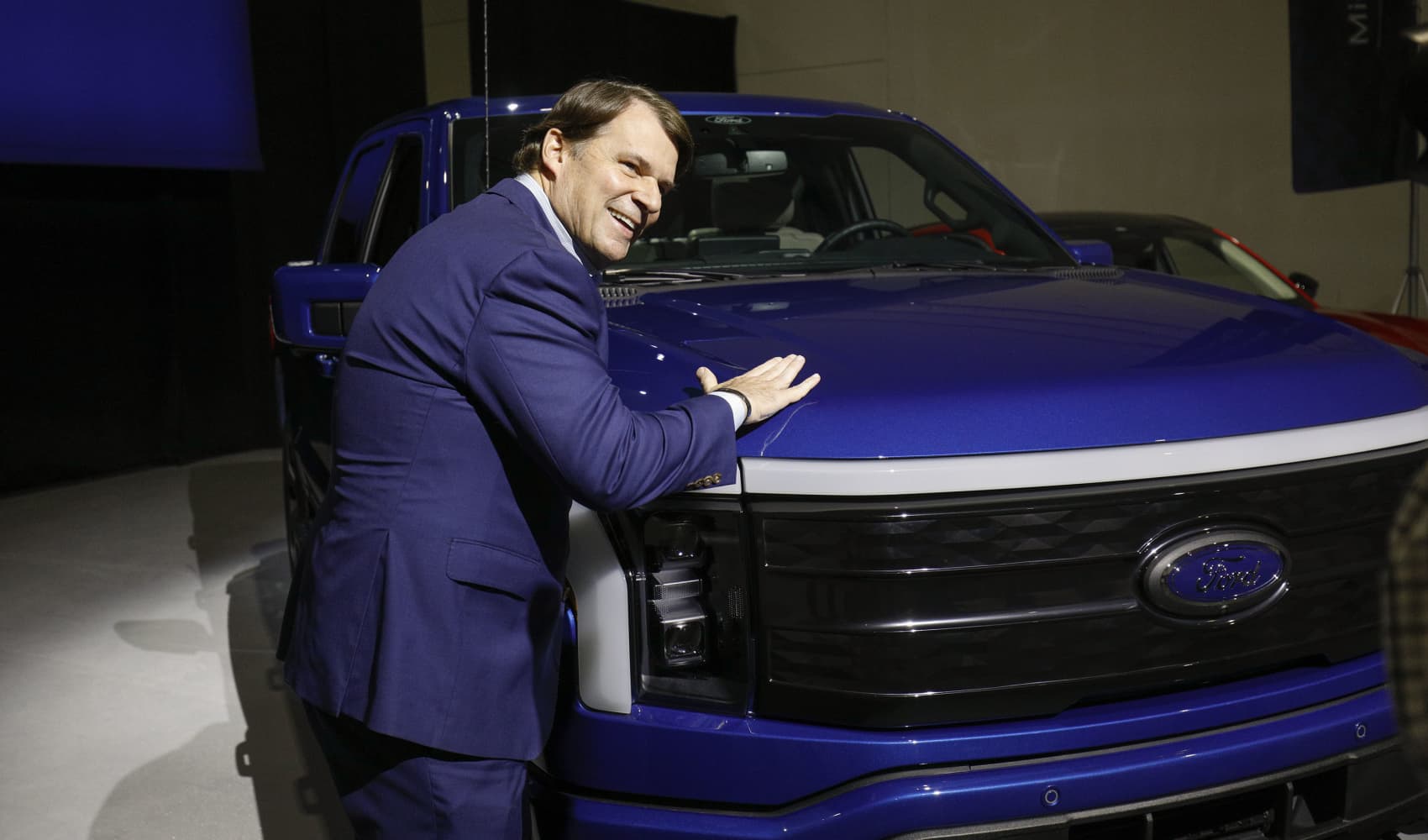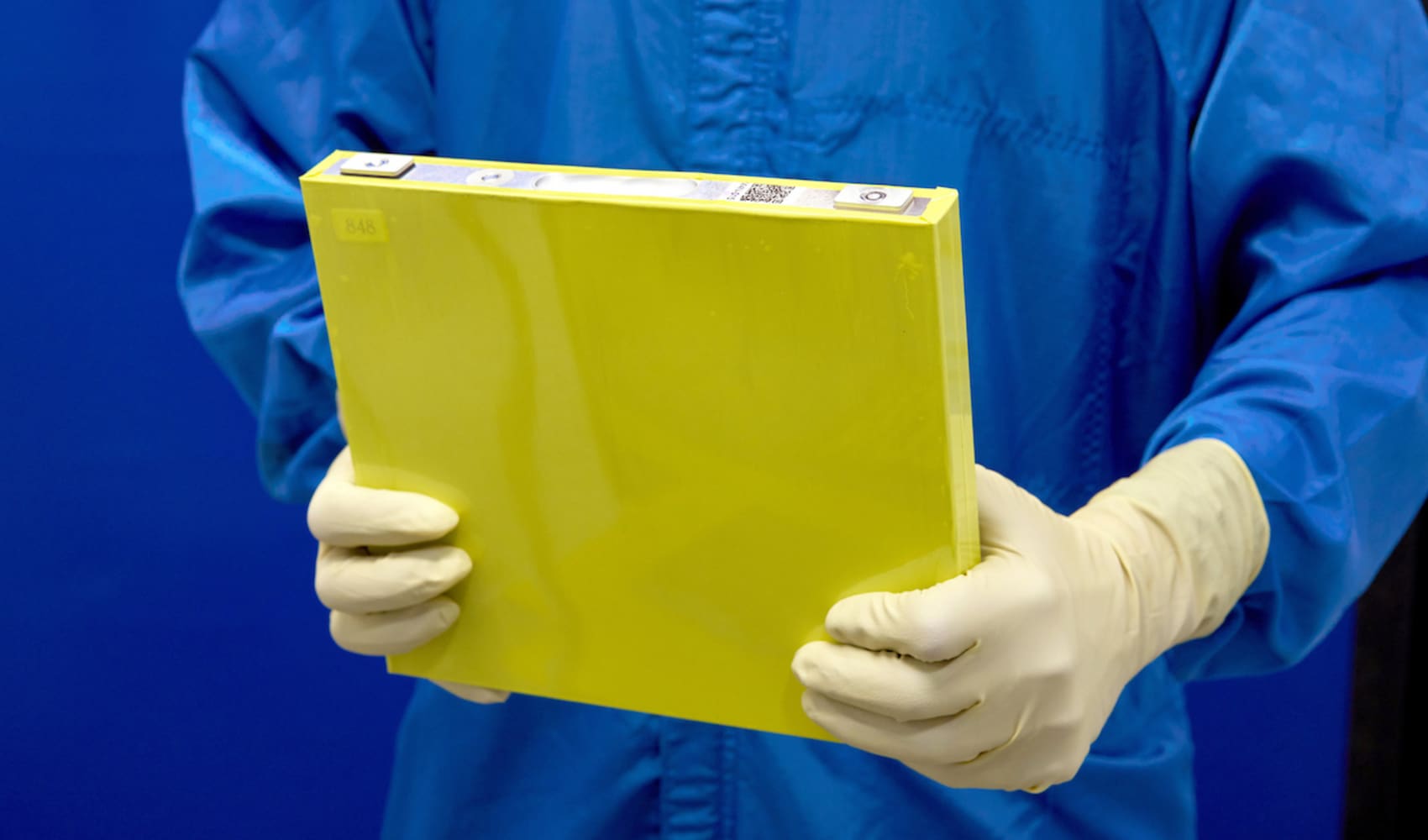Ford CEO Drives Chinese EVs: Genius Strategy Revealed!
Ford CEO's Secret Weapon: Driving Chinese EVs to Conquer the Competition
Introduction: Learning from the Enemy (and Loving It!)
In the high-stakes world of automotive manufacturing, especially when it comes to electric vehicles (EVs), you can't afford to stand still. You need to constantly innovate, adapt, and, yes, even learn from your competitors. And that's exactly what Ford Motor Company CEO Jim Farley is doing. He’s taking a page right out of Sun Tzu's playbook and getting behind the wheel of the competition. But instead of weapons and warhorses, Farley is testing out Chinese EVs. He believes that understanding their strengths is key to addressing Ford's own weaknesses.
Why Drive the Competition? It's Elementary, My Dear Watson!
Why would the CEO of one of the largest U.S. auto manufacturers spend his time driving cars made by competitors? Simple: to understand them inside and out. It's not enough to read reports or look at specs. You need to feel the car, experience the technology, and understand what makes it appealing to consumers. Driving the competition is like taking a peek under the hood, not just of their cars, but of their strategies.
The Xiaomi Experiment: Six Months of EV Immersion
Farley hasn’t just casually glanced at Chinese EVs; he’s fully immersed himself. In an October 2024 podcast episode of the "Everything Electric Show," he revealed that he spent at least six months driving an electric vehicle made by Xiaomi, a company primarily known for its smartphones and consumer electronics. Imagine, the CEO of Ford cruising around in a Xiaomi EV! That's dedication. "We flew one from Shanghai to Chicago, and I’ve been driving it for six months now and I don’t want to give it up," Farley confessed. What does that tell you?
Diving Deep: The Importance of Experiential Learning
Getting Behind the Wheel: More Than Just a Test Drive
Experiential learning is a powerful tool. You can read about a new technology or manufacturing process, but until you experience it firsthand, you can't truly understand its potential. Farley understands this. He’s not just taking a test drive; he's living with the car, using it in his daily life, and experiencing it as a consumer would. This provides invaluable insights that no report could ever capture.
The Power of Immersion: Living the EV Life
Imagine spending six months driving an EV from a competitor. You'd learn everything: the good, the bad, and the ugly. You'd understand the charging infrastructure challenges, the range anxiety concerns, and the features that delight users. This immersive experience gives Farley a competitive edge and allows him to make more informed decisions about Ford's EV strategy.
BYD and Tesla: The Giants Ford is Chasing
Ford has invested billions in the electric vehicle industry, but it's playing catch-up to two major players: BYD and Tesla. These companies dominate the EV market, and Ford knows it needs to up its game to compete. It's like a marathon where Ford is trying to close the gap on the leaders. And Farley believes that studying their strengths is the key to success.
Chinese Innovation: What Can Ford Learn?
China has become a global leader in electric vehicle technology. Chinese manufacturers are known for their innovative designs, advanced battery technology, and competitive pricing. So, what can Ford learn from them?
Battery Technology: The Heart of the EV Revolution
Battery technology is the heart of any electric vehicle. Chinese companies have made significant advancements in battery chemistry, energy density, and charging speed. Ford needs to stay ahead of the curve in this critical area.
Software and Connectivity: The Brain of the EV
Modern EVs are essentially computers on wheels. Software and connectivity are crucial for features like autonomous driving, over-the-air updates, and infotainment systems. Chinese EVs are often packed with advanced software features, and Ford can learn from their approach.
User Experience: Making EVs Delightful to Drive
User experience (UX) is often overlooked, but it's crucial for customer satisfaction. Chinese EV manufacturers are focusing on creating intuitive and user-friendly interfaces. Ford can learn from their design principles to make its EVs more appealing to drivers.
Leadership Lessons: What This Says About Jim Farley
Farley's decision to drive Chinese EVs speaks volumes about his leadership style. He’s not afraid to challenge conventional wisdom, embrace new ideas, and learn from the competition. That's the mark of a true leader.
Humility and Open-Mindedness: The Keys to Innovation
Humility is essential for innovation. Farley recognizes that Ford doesn't have all the answers and that it can learn from others. He's open-minded and willing to consider new approaches, even if they come from unexpected sources. This mindset is crucial for driving innovation.
A Growth Mindset: Embracing Challenges and Learning from Mistakes
Farley embodies a growth mindset. He sees challenges as opportunities for learning and growth. He's not afraid to make mistakes, as long as he learns from them. This resilience and adaptability are essential for navigating the rapidly evolving EV landscape.
Beyond Cars: Applying the Lesson to Other Industries
The lesson that Farley is teaching us goes beyond the automotive industry. It applies to any business facing competition. Whether you're selling software, food, or fashion, you need to understand your competitors' strengths and weaknesses. You need to be willing to learn from them and adapt your strategy accordingly. Complacency is the enemy of progress.
The Future of Ford: Embracing Innovation and Competition
Ford is betting big on electric vehicles. The company has committed billions of dollars to developing new EVs and battery technology. But investment alone isn't enough. Ford needs to embrace innovation, learn from the competition, and constantly improve its products. Farley's willingness to drive Chinese EVs is a sign that Ford is on the right track.
The Electric Vehicle Race: A Global Competition
The electric vehicle race is a global competition. Companies from around the world are vying for market share. Ford needs to compete with the best, including BYD, Tesla, and other Chinese manufacturers. By understanding their strengths and weaknesses, Ford can develop EVs that are competitive in terms of performance, price, and features.
Is This Reverse Engineering? No, It's Strategic Intelligence!
Some might call Farley's approach reverse engineering, but it's much more than that. It's strategic intelligence gathering. He’s not just taking apart the cars to see how they work. He’s experiencing them as a customer would, understanding their appeal, and identifying areas where Ford can improve. This holistic approach is what sets Farley apart.
A Bold Move: The Risks and Rewards
Driving Chinese EVs is a bold move for the CEO of Ford. It's a public acknowledgment that the competition is strong and that Ford needs to up its game. But the rewards are potentially huge. By learning from the best, Ford can develop EVs that are more competitive, more innovative, and more appealing to consumers.
Conclusion: The Road Ahead for Ford and the EV Revolution
Jim Farley's approach to understanding the competition by driving Chinese EVs is a testament to his leadership and Ford's commitment to innovation. By embracing a growth mindset, learning from the best, and constantly striving to improve, Ford is well-positioned to succeed in the electric vehicle revolution. The key takeaways are clear: understand your competition, embrace innovation, and never stop learning. The road ahead is electric, and Ford is determined to be in the driver's seat.
Frequently Asked Questions
Here are some frequently asked questions about Ford's strategy and the electric vehicle market:
- Why is Ford focusing so heavily on electric vehicles?
- What are the main challenges Ford faces in competing with BYD and Tesla?
- How is Ford planning to differentiate its EVs from the competition?
- What role will government regulations and incentives play in the adoption of EVs?
- What does the future hold for the automotive industry in light of the rise of electric vehicles?
Ford sees electric vehicles as the future of transportation. They are cleaner, more efficient, and offer a better driving experience than traditional gasoline-powered cars. Ford is committed to leading the EV revolution.
The main challenges include battery technology, software development, and manufacturing scale. BYD and Tesla have a head start in these areas, but Ford is investing heavily to catch up.
Ford is focusing on building EVs that are reliable, durable, and offer a great driving experience. They are also leveraging Ford's iconic brand and dealer network to build customer loyalty.
Government regulations and incentives are crucial for accelerating the adoption of EVs. Tax credits, subsidies, and emission standards can all help to encourage consumers and businesses to switch to EVs.
The automotive industry is undergoing a massive transformation. Electric vehicles are just one piece of the puzzle. Autonomous driving, connected cars, and shared mobility are also shaping the future of transportation. The industry is set for dramatic changes in the coming years.

